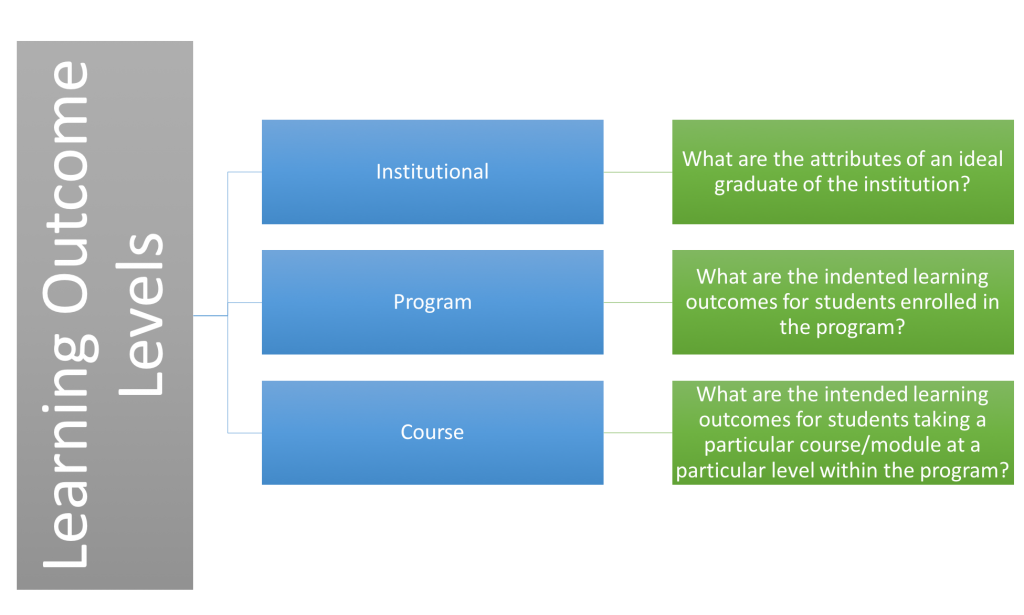Main Body
Program and Course Learning Outcomes
By the end of this chapter, you will be able to:
- Describe learning outcomes in the form of standards that students are to attain at the end of the course using appropriate learning verbs.
- Write learner-oriented outcomes that are achievable and measurable and that motivate students to reflect on and take responsibility for their learning.
- Develop meaningful learning outcomes, mindful of multiple ways of knowing.
Learning outcomes explain what students will know and be able to do as a result of engaging in the learning process. Learning outcomes represent statements of achievement expressed from the learner’s perspective: “At the end of (process of learning), students will know… and be able to…”
Learning outcomes:
- Identify specifically what should be learned
- Serve as guidelines for content, instruction, and assessment
- Are achievable and measurable
- Connect directly to the assessment criteria that are used to judge achievement
- Focus on learning rather than teaching
- Are shared with the learner so expectations are transparent
- Reflect multiple learning domains (cognitive, affective, psychomotor, spiritual)
- Reflect significant learning categories (foundational knowledge, application, integration, human dimension, caring, learning how to learn)
Learning outcomes have levels:

- Complete a phrase. The phrase should describe what students should know and/or be able to do by the end of the program/course (e.g. “By the end of this program, successful students will be able to…”).
- Start with an action verb. The verb should specify the depth of learning expected, followed by a statement describing the knowledge and abilities to be demonstrated, and finally a statement (or statements) to provide context within the discipline.
- Be concise, direct and clearly stated. Terms such as know, understand, learn, appreciate and to be aware of should be avoided, and the specific level of achievement should be clearly identified.
- Be observable and measurable. Learning outcomes must be capable of being assessed, based on clearly defined criteria associated with the teaching/learning activities and assessment strategies contained within the courses in the program.
- Be balanced. If the learning outcome is too broad, it will be difficult to assess. If the list of learning outcomes is long and detailed, they are likely to limit flexibility and adaptability in the curriculum.
- Be grounded within the discipline. The outcomes should be consistent with disciplinary language, norms and standards.
For example:
Brainstorming what students are expected to know, do, and value should help shape dynamic, overarching program learning outcomes that can used to inform course learning outcomes. consider:

Guiding Questions
Before you start this phase of instructional design, be sure to ask yourself the following questions:
- How would you describe the attributes of an ideal graduate?
- What key knowledge/skills, values and attitudes should students who complete the program possess?
- Have you considered program learning outcomes that support multiple ways of knowing?
- What are the essential things students must know and do to succeed in the course?
- How will the course learning outcomes build on the knowledge or skills that students bring to the course?
- Will you be able to measure success in these course learning outcomes?
Sources
Preparing Effective Learning Outcomes. University of Guelph. Retrieved May 5, 2017.

